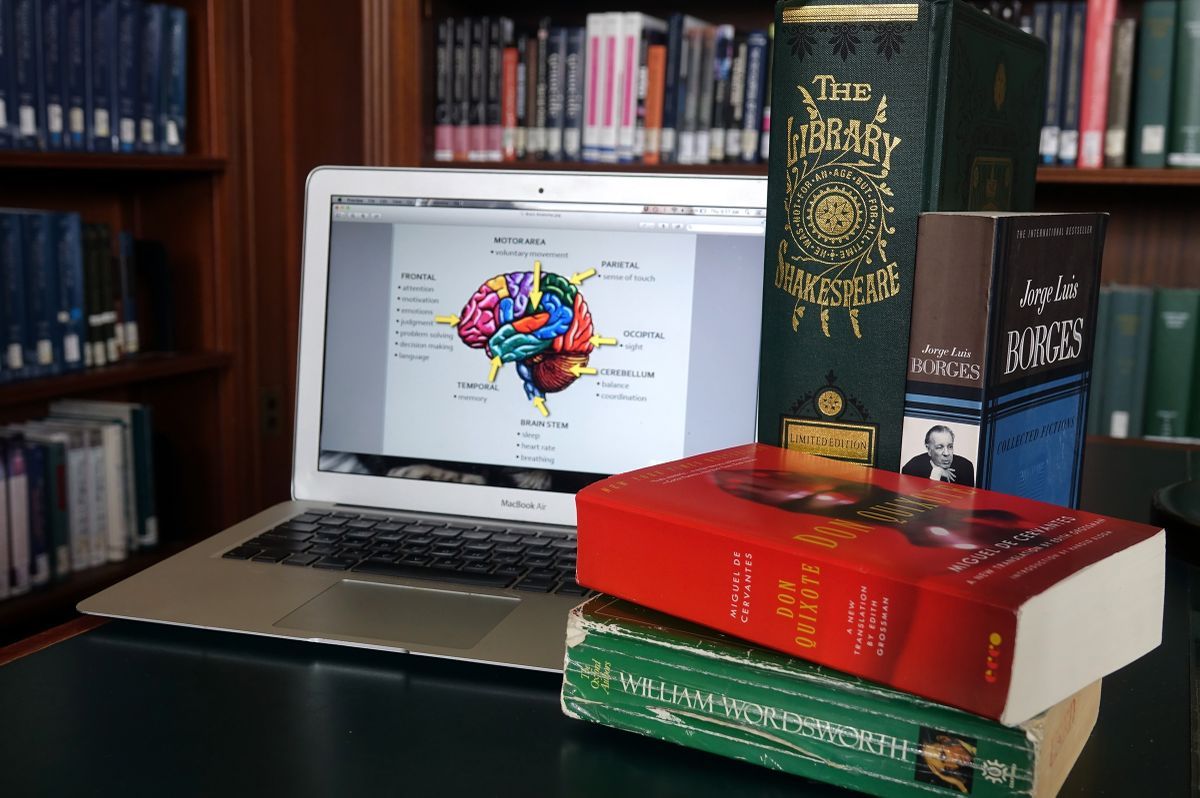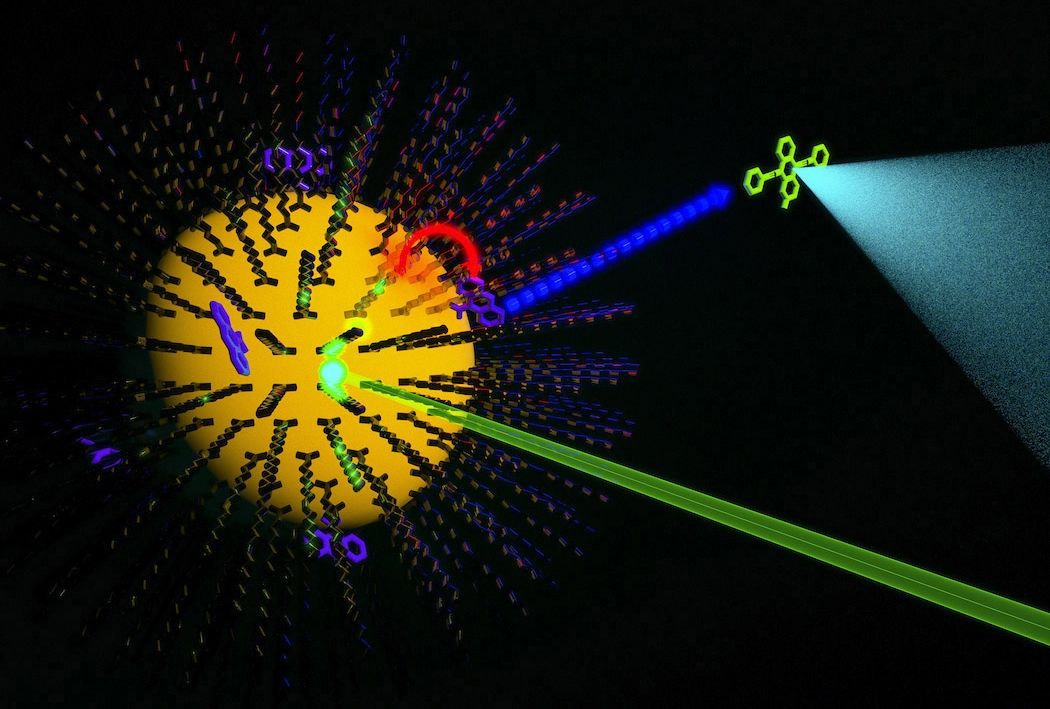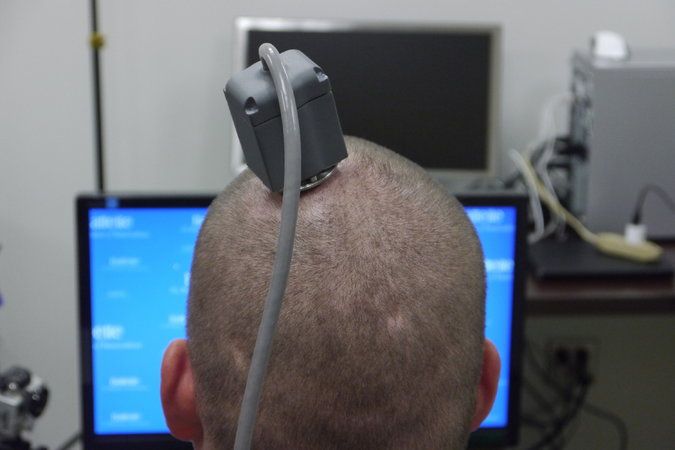UCLA freshman cluster course combines anatomy, history, philosophy and humanities to provide an interdisciplinary approach to studying neuroscience.
Ever really wanted to know what folks truly are thinking about?
A new experiment advances the idea that brain scans can teach us something about how the human mind works.
By Nathan Collins
Mind reading stands as one of science fiction’s most enduring improbabilities, alongside light-speed space travel and laser guns. But unlike those latter two, mind reading actually has a whiff of reality: In a new demonstration, psychologists have shown they can figure out how far along someone’s brain is in the process of solving a sophisticated math problem—a result that, more than anything else, indicates the promise of new brain-scanning techniques for understanding the human mind.
On the path towards Singularity — I believe that this is an individual choice. However, to remain relevant and competitive in industry we may see a day when folks will require this type of enhancement to compete, perform in military operations, etc.
The researchers carried out a survey of more than 4,700 US adults.
The survey asked the public on views of gene editing, implantation of brain chips, and transfusions of synthetic blood.
More said they would not want enhancements of their brains and their blood: 66 per cent and 63 per cent, respectively, than said they would want them — 32 per cent and 35 per cent.
Finally, portable thermal imaging devices could be here soon.
The primary source of infrared radiation is heat—the radiation produced by the thermal motion of charged particles in matter, including the motion of the atoms and molecules in an object. The higher the temperature of an object, the more its atoms and molecules vibrate, rotate, twist through their vibrational modes, the more infrared radiation they radiate. Because infrared detectors can be “blinded” by their own heat, high-quality infrared sensing and imaging devices are usually cooled down, sometimes to just a few degrees above absolute zero. Though they are very sensitive, the hardware required for cooling renders these instruments less-than-mobile, energy-inefficient and limits in-the-field applications.
A paper published this week in the journal Optics Express, from The Optical Society (OSA), describes a new type of portable, field-friendly, mid-infrared detector that operates at room temperature. Room-temperature operation, notes Andreas Harrer of the TU-Wien Center for Micro- and Nanostructures, Austria and the first author of the paper, “is essential for detectors to be energy-efficient enough for portable and handheld applications. We want to pave the way to an infrared-detection technology which is flexible in design and meets all requirements for compact integrated field-applicable detection systems.”
The type of instrument developed by Harrer and his colleagues is known as a quantum cascade detector, or QCD. A QCD is a high-speed detector composed of semiconductor devices that sense specific wavelengths of infrared light and convert that light into proportionate electrical signals. A unique aspect of the design described by Harrer and his colleagues is that it consists of an 8 × 8 array of pixels, each approximately 110 microns square. Tuning is achieved by specifically adjusting the well and the barrier dimensions to a wavelength of 4.3 microns.
Interesting work on solar energy and Q-dot photosensitizers.
Interfacial triplet-triplet energy transfer is used to significantly extend the exciton lifetime of cadmium selenide nanocrystals in an experimental demonstration of their molecular-like photochemistry.

Photosensitizers are an essential component of solar energy conversion processes, in which they are used to generate the highly reactive excited states that enable energy conversion (e.g., photochemical upconversion).1, 2 Typically, molecular triplet photosensitizers are used for such applications, but to improve the solar energy conversion process, the identification and preparation of next-generation triplet photosensitizers is required. However, the design of such photosensitizers—suitable for solar energy conversion and photocatalytic applications—remains a challenge.3
Website: http://sensproject21.org/
Building the bridge to human clinical trials for rejuvenation biotechnologies.
INTERNET ENTREPRENEUR MICHAEL GREVE COMMITS $10 MILLION TO SENS RELATED RESEARCH AND STARTUPS INCLUDING A $5 MILLION DONATION OVER 5 YEARS TO SENS RESEARCH FOUNDATION.
The social and economic burdens of age-related disease are rising steeply. For an increasing number of older individuals, healthcare is too often reduced to crisis management in the emergency room, painfully harsh treatments for diseases such as cancer, or best efforts at palliative care.
It doesn’t have to be this way.
Project|21 is a new initiative created by SENS Research Foundation to end age-related disease through human clinical trials, starting in 2021, through investment in rejuvenation biotechnology. We have all the pieces in place–core research groups, key players, shared knowledge, and underlying tools—for the creation of this industry. Through three new programs, the Bridge fund, The Center of Excellence, and The Alliance Program, Project|21 will deliver the perfect environment for this fusion of opportunity and investment. With proper stewardship of this emerging industry, we can create an environment where the first damage repair interventions to address specific age-related disease will be brought to human clinical trials within five years.
Excellent article on improving crystalized formations & usage.
According to conventional understanding, if the interactions are isotropic (where all spin directions are possible), this phenomenon can occur if the spins are arranged in triangular geometries and the interactions between them are antiferromagnetic favouring antiparallel alignment of the spins. For three atoms forming the corners of a triangle, the electronic spin of one atom cannot simultaneously be oriented antiparallel to those on both the other two atoms. In real materials that contain triangular units coupled by antiferromagnetic interactions this “frustration” can prevent the spins from coming to rest in a particular orientation even at absolute zero temperature, instead they move collectively like atoms in a liquid. By contrast, ferromagnetic interactions do not give rise to frustration in isotropic magnets because mutually parallel alignment of the spins can always occur. For these reasons, only a few isotropic materials have been proposed as spin liquid candidates.
Monocrystals with complex magnetic interactions
Now a team headed by Prof. Bella Lake has produced and investigated the first monocrystals of calcium-chromium oxide (Ca10Cr7O28). Calcium-chromium oxide is made up of what are known as Kagomé lattices — reminiscent of the pattern of triangles and hexagons woven in Japanese basketry. As a result, a complex set of isotropic magnetic interactions develop in this material, consisting of not only anti-ferromagnetic interactions but also much stronger ferromagnetic interactions that according to conventional understanding should prevent the existence of spin liquid behavior. Magnetic and Neutron scattering experiments conducted in Germany, France, England, and the USA, as well as muon spectroscopy experiments performed in Switzerland have however shown that the spins in these samples retain their collective motion even at temperatures as low as 20 millikelvin and behave like a quantum spin liquid.
Abstract: We prove a lower bound on the information leakage of any classical protocol.
Computing the equality function in the simultaneous message passing (SMP) model. Our bound is valid in the finite length regime and is strong enough to demonstrate a quantum advantage in terms of information leakage for practical quantum protocols. We prove our bound by obtaining an improved finite size version of the communication bound due to Babai and Kimmel, relating randomized.
Communication to deterministic communication in the SMP model. We then relate. information leakage to randomized communication through a series of reductions.
We first provide alternative characterizations for information leakage, allowing us to link it to average length communication while allowing for. shared randomness (pairwise, with the referee). A Markov inequality links this.
With bounded length communication, and a Newman type argument allows us to go from shared to private randomness. The only reduction in which we incur more.
BTW — make sure you view that reference whitepaper on the new quantum algorithms on OEM boards.
ComNav Technologies has released its new generation Quantum algorithm to international market. The Quantum algorithm can be easily achieved through a firmware upgrade (version 2.5.2 and above), and suits all ComNav OEM boards and OEM-based receivers.
An upgrade to ComNav’s Quan algorithm, the Quantum algorithm dramatically improves the stability and reliability of RTK positioning in complex environments, as well as providing a DP-filter enhancement for the ComNav GNSS products.
The public was unenthusiastic on all counts, even about protecting babies from disease.
Americans aren’t very enthusiastic about using science to enhance the human species. Instead, many find it rather creepy.
A new survey by the Pew Research Center shows a profound distrust of scientists, a suspicion about claims of progress and a real discomfort with the idea of meddling with human abilities. The survey also opens a window into the public’s views on what it means to be a human being and what values are important.
Pew asked about three techniques that might emerge in the future but that are not even close to ready now: using gene editing to protect babies from disease, implanting chips in the brain to improve people’s ability to think, and transfusing synthetic blood that would enhance performance by increasing speed, strength and endurance.






